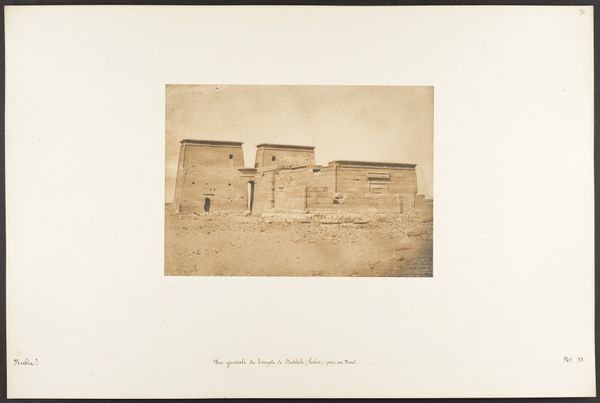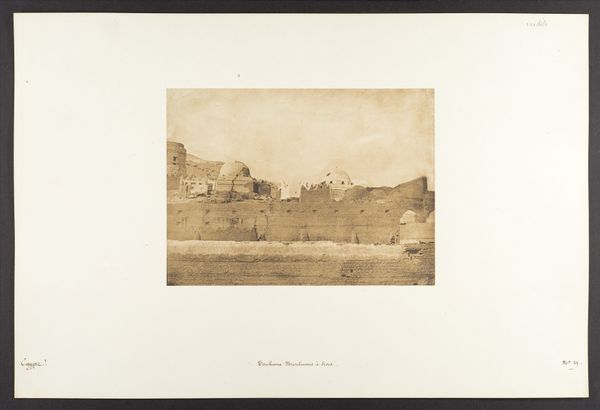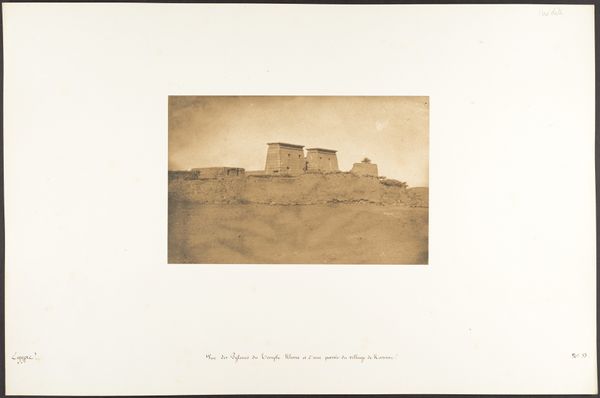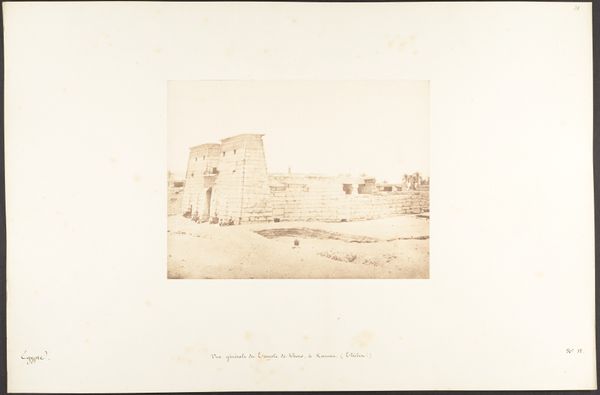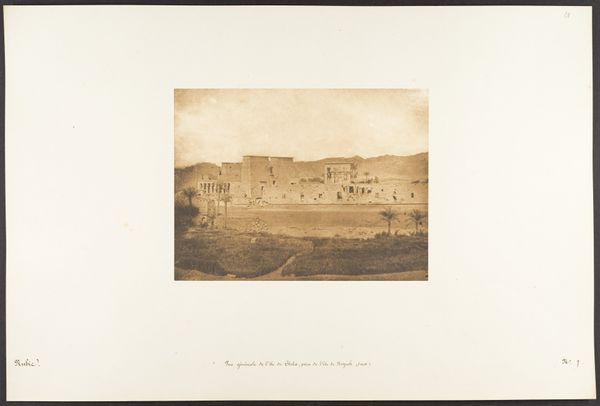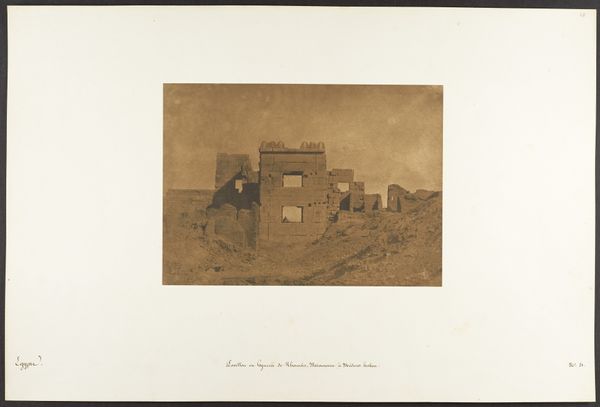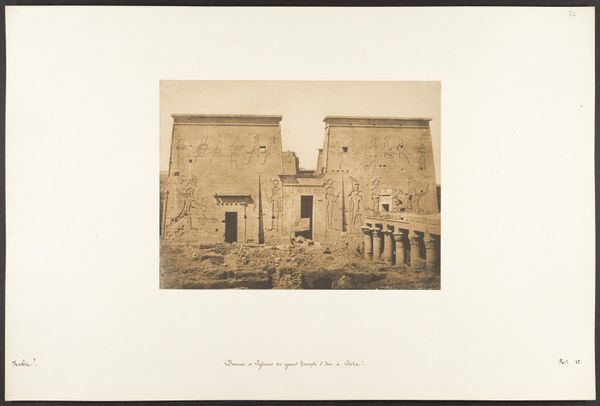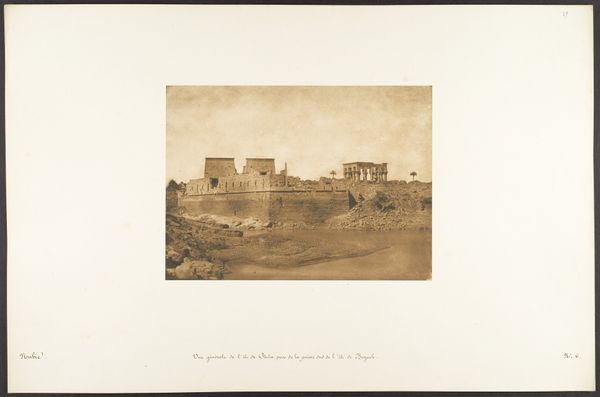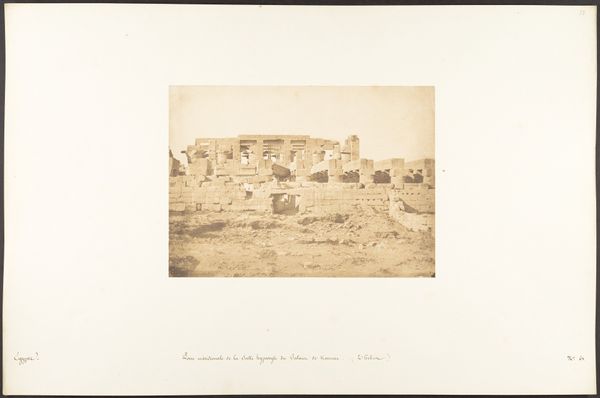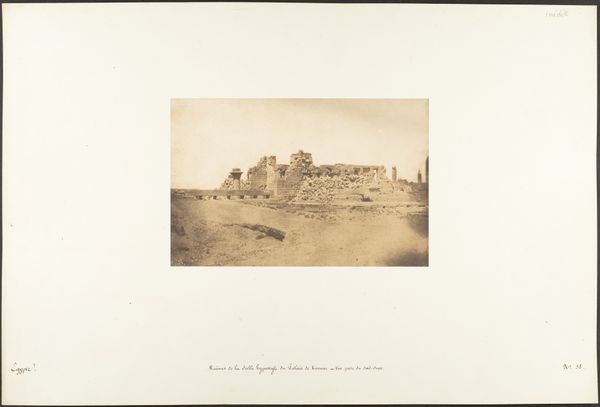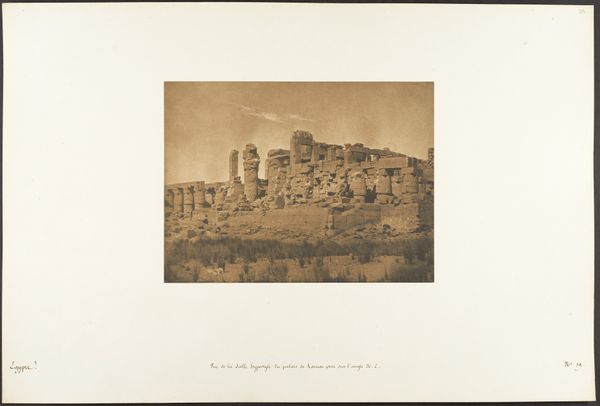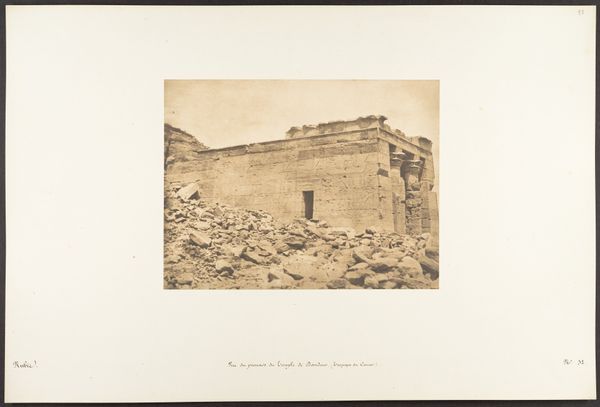
photography, albumen-print, architecture
#
landscape
#
ancient-egyptian-art
#
photography
#
ancient-mediterranean
#
albumen-print
#
architecture
Dimensions: Image: 5 7/8 × 8 1/8 in. (14.9 × 20.7 cm) Mount: 12 5/16 × 18 11/16 in. (31.2 × 47.5 cm)
Copyright: Public Domain
Maxime Du Camp captured this photograph of the Grand Pylon at Karnak in Thebes. These pylons, monumental gateways to the temple complexes, were replete with symbols of power and divinity. Their imposing size evokes the mountain hieroglyph, representing the sacred mount and the emergence of the gods. Consider the motif of the gateway. Throughout millennia, across cultures from ancient Mesopotamia to Rome, gates marked transitions, both physical and spiritual. In ancient Egypt, the pylon symbolized not just entry into a sacred space, but also a transition to a higher state of consciousness. Think of how, centuries later, the arch would become a ubiquitous symbol of triumph and access to a different world. The impulse to monumentalize entrances and thresholds speaks to a deep-seated human desire to mark the boundaries between the known and the unknown, the profane and the sacred. This cultural memory resonates, engaging us on a subconscious level. The pylon, in its silent grandeur, reminds us of the enduring human quest to define our place in the cosmos. Its symbolism transcends time, a testament to our shared heritage.
Comments
No comments
Be the first to comment and join the conversation on the ultimate creative platform.

